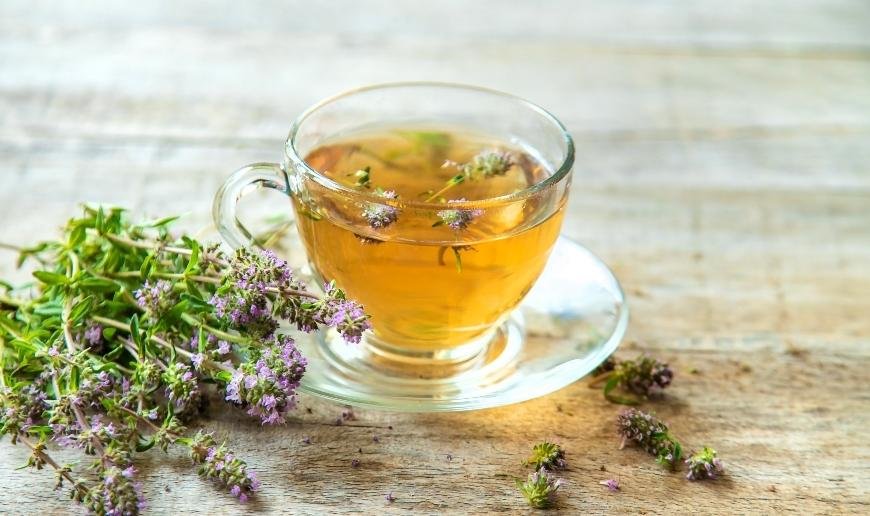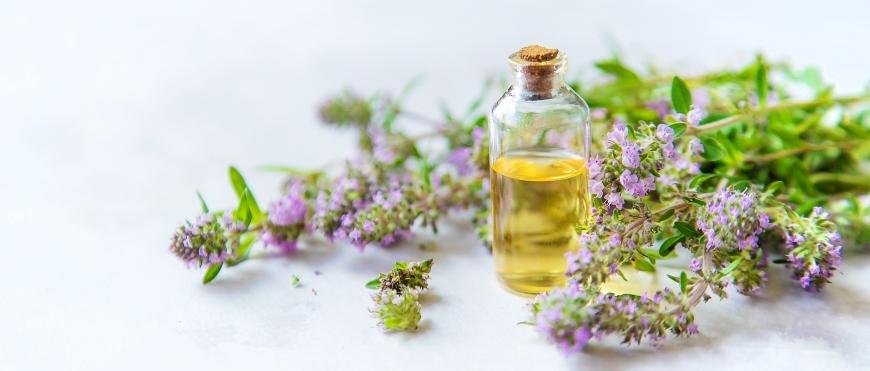How to use Thyme?
In this comprehensive guide, we will delve into the world of thyme, exploring its origins and various applications.

How to use Thyme? This pungent herb has been employed for generations, providing a range of advantages and usages. In this comprehensive guide, we will delve into the world of thyme, exploring its origins and various applications.
From cooking with fresh thyme leaves to creating soothing teas or even smoking dried thyme as a natural remedy, there are countless ways to incorporate this fragrant herb into your daily life. Additionally, we'll discuss the potential health benefits of using Thymus vulgaris and provide essential safety considerations when utilizing this potent plant.
So sit back and immerse yourself in the aromatic world of thyme as we uncover how to use Thyme effectively in various aspects of your life.
Table of Contents:
- What is Thyme?
- Cooking with Thyme
- Smoking Thyme
- Benefits of Using Thyme
- Safety Considerations When Using Thyme
- Frequently Asked Questions How to Use Thyme?
- Conclusion
What is Thyme?
Thymus vulgaris, commonly known as thyme, is a versatile herb with a rich history of use in various cultures. For centuries, thyme has been used not only for its culinary applications but also to benefit from its medicinal properties. Thymol, a compound found in thyme, has been used for its medicinal properties due to its antimicrobial, antifungal and antioxidant effects.
Cooking with Thyme
Utilizing thyme in your cooking, be it fresh leaves, dried, or thymus vulgaris (common thyme), can bring out a range of flavors and provide health benefits. Whether you're using fresh thyme leaves, dried thyme, or even thymus vulgaris (common thyme), incorporating this aromatic herb into your cooking can provide both taste and health benefits.
A. How to Add Thyme in Your Recipes
- Fresh Herbs: When using fresh thyme, simply strip the leaves off the stem by running your fingers along it. You can add whole leaves or chop them finely for a more subtle flavor.
- Dried Thymes: If you have store-bought dried thymes. Dried herbs are typically more potent than their fresh counterparts; use about one-third less when substituting for fresh.
- Thymus Vulgaris: Commonly known as garden or English thyme, this variety has a mild flavor that works well in most recipes calling for "thymes." Simply substitute an equal amount of common time for other varieties if needed.
B. Different Ways to Cook with Thymes
- Add fresh or dried thimes directly into soups and stews during cooking - they'll release their essential oils and infuse the dish with flavor.
- Combine thymes with other fresh herbs, such as rosemary or sage, to create a fragrant herb bundle for roasting meats or vegetables.
- Make a thyme-infused oil by heating olive oil and adding crushed garlic cloves, red pepper flakes, and sprigs of fresh thymes. This can be used for dipping bread or drizzling over pasta dishes.
- Sprinkle dried thimes into homemade salad dressings for an extra layer of flavor - try mixing it with lemon juice, olive oil, salt, and pepper for a simple vinaigrette.
C. Thyme Essential Oil in Cooking
Thyme essential oil, which contains the active compound thymol spray (thymol), is another way to incorporate this aromatic herb into your cooking. However, essential oils are highly concentrated extracts that should be used sparingly - just one drop can add intense flavor to a dish. Be sure to dilute it properly before using; mix one drop of essential oil with at least two teaspoons of carrier oil like coconut or almond. Then you can use this mixture sparingly in recipes where you want some added depth from the natural remedy properties found within time plants themselves.
Incorporating thymes into your cooking not only adds delightful flavors but also provides various health benefits associated with its consumption. So go ahead and experiment by adding these versatile herbs to your favorite dishes.
Cooking with the fragrant herb thyme is an excellent way to impart flavor and aroma to meals. Now let's move on to the next heading: Making Tea with Thyme, which can be an enjoyable experience for those who enjoy herbal teas.
Making Tea with Thyme

Utilizing fresh or dried thyme, making tea with this popular herb is a simple way to experience its multiple benefits and enjoy an aromatic, calming drink. Thyme tea can be made using fresh or dried thyme, offering you an aromatic and soothing beverage that's perfect for relaxing after a long day or boosting your immune system during cold season.
Ingredients:
- Fresh thyme leaves or dried thyme (1-2 teaspoons)
- Boiling water (8 ounces/240 ml)
- Honey, lemon, or other sweeteners (optional)
Instructions:
- Gather your ingredients: If using fresh thyme leaves, gently rinse them under cool water and pat dry with a paper towel. For dried thymus vulgaris, measure out the desired amount.
- Add the fresh or dried herbs to your teapot or infuser: Place the measured-out herbs into either a teapot equipped with an infuser basket, a loose leaf tea ball, or even directly in your cup if you don't mind straining later on.
- Pour the hot liquid over the herbs until they are completely submerged. Be sure to use freshly boiled water as it will help extract more flavor from both fresh and dried varieties of common thymes.
- Cover and steep for at least five minutes: Allow time for flavors to develop by letting everything sit undisturbed; longer steeping times may result in stronger-tasting teas but could also lead towards bitterness depending on personal preferences so adjust accordingly.
- Strain and enjoy: If you used a teapot or tea ball, simply remove the infuser basket or tea ball from your cup. If you added herbs directly to your cup, use a fine mesh strainer to separate the liquid from the solid plant material.
- Add sweeteners if desired: Try adding a hint of sweetness to your thyme tea with honey, lemon juice or other natural sweeteners at this stage - adjust according to personal preference. Adjust according to taste preferences.
Making tea with thyme is a great way to enjoy the subtle, yet distinct flavor of this herb. Now let's explore smoking thyme as an alternative option for those looking for more potent effects from their herbal remedies.
Smoking Thyme
If you're curious about alternative ways to enjoy the benefits of thyme, smoking it might be an option worth exploring. Although not as common as other methods like cooking or making tea, some people do smoke dried thyme for its potential relaxing effects and unique flavor. In this area, we'll take a look at how to smoke thyme and the possible results it could have.
Preparing Dried Thyme for Smoking
- Gather your materials: To get started with smoking thyme, you'll need some dried thyme leaves, a grinder (optional), rolling papers or a pipe, and a lighter.
- Grind the dried thyme: If using a grinder, place the dried leaves inside and grind them until they reach a consistency similar to that of loose tobacco. If you don't have a grinder, you can manually crumble the leaves into small pieces.
- Pack your pipe or roll a joint: Once your dried thyme is ground up or crumbled into small pieces, pack it into your pipe's bowl or spread it evenly along the length of your rolling paper before sealing it shut with saliva or water.
The Effects & Side Effects of Smoking Thyme
The exact effects experienced when smoking dried thymes may vary from person to person due to individual differences in sensitivity and tolerance levels. Some users report feeling relaxed after inhaling its aromatic smoke while others may experience mild euphoria. However, there are also potential side effects associated with smoking any plant material - including thyme. These may include coughing, throat irritation, and respiratory discomfort due to the inhalation of smoke particles. If you have any pre-existing lung conditions or are prone to respiratory issues, it's best to consult with a healthcare professional before trying this method. It's also important to note that smoking thyme is not as well-researched as other methods like consuming it in tea or food. As such, there might be unknown risks associated with this practice.
6. Benefits of Using Thyme

Dried, fresh, or as an essential oil - all forms of thyme offer a variety of health benefits in addition to its savory flavor. Let's explore some of the key advantages associated with each consumption method.
A. Benefits of Cooking with Thyme
Cooking with thyme can provide you with several health benefits due to its rich content of vitamins and minerals like vitamin C, iron, and calcium. Thyme's antioxidant properties may help shield the body from dangerous free radicals and oxidative strain. Some potential benefits include:
- Promoting healthy digestion: Adding thyme to your meals may improve digestion by stimulating the production of gastric juices.
- Boosting immunity: The high levels of vitamin C found in fresh herbs like thymus vulgaris can support a strong immune system.
- Fighting inflammation: The natural remedy has anti-inflammatory properties that may help reduce symptoms related to conditions such as arthritis or asthma.
B. Benefits of Tea with Thyme
Thymol, one of the main components found in thyme extracts, is known for its antiviral and antibacterial properties which make it an excellent home remedy for colds and respiratory issues when used in tea form. Drinking thymus vulgaris tea may offer these additional benefits:
- Soothing sore throat: Gargling warm water infused with dried or fresh thymus vulgaris can help alleviate throat pain and irritation.
- Relieving cough: The natural expectorant properties of thyme tea may aid in loosening mucus, making it easier to expel through coughing.
- Easing digestive discomfort: Drinking thyme tea can also help relieve indigestion, bloating, and gas due to its carminative effects.
C. Benefits of Thyme Essential Oil
Thyme essential oil, derived from the steam distillation of fresh or dried thymus vulgaris leaves, is a versatile product that offers numerous benefits when used topically or diffused in aromatherapy. Some potential advantages include:
- Applying a diluted form of thyme essential oil on the skin may help combat acne and other skin issues due to its antibacterial properties.
- Mood enhancement: Diffusing this aromatic oil can create a calming atmosphere that helps reduce stress and anxiety levels while promoting mental clarity.
- Pain relief: Massaging diluted thymol spray onto sore muscles or joints might provide temporary relief from pain and inflammation thanks to its analgesic qualities.
Given the potential benefits of thyme, it is essential to be mindful of safety precautions when using this herb. Next, we will look at what safety considerations need to be made when incorporating thyme into your lifestyle.
7. Safety Considerations When Using Thyme
While thyme is generally considered safe for consumption, it's essential to be aware of potential safety concerns when using this versatile herb. In this section, we'll discuss important considerations such as allergic reactions and interactions with medications.
Allergic Reactions
As with any natural remedy or home remedy, some individuals may experience an allergic reaction to thyme. Symptoms of an allergy may include skin inflammation, itching, puffinessing, breathing troubles and GI problems such as nausea or vomiting. If you suspect that you're experiencing an allergic reaction after consuming thymus vulgaris, discontinue use immediately and consult a healthcare professional.
Pregnancy and Breastfeeding
Pregnant women should be aware that certain compounds in fresh thyme may induce uterine contractions, and thus it is best to consult a doctor before consuming large amounts during pregnancy or breastfeeding. It's best to consult your doctor before adding significant quantities of fresh thyme leaves or other herbal supplements during pregnancy or breastfeeding.
Frequently Asked Questions How to Use Thyme?
How should thyme be used?
Thyme can be used in various ways, such as cooking, making tea, and even smoking. Incorporate fresh or dried thyme into recipes for added flavor or brew it into a soothing herbal tea. Some people also enjoy smoking thyme for its calming effects.
What are 10 uses for thyme?
- Cooking: Add to soups, stews, and sauces
- Baking: Enhance breads and savory pastries
- Tea: Brew a relaxing herbal infusion
- Aromatherapy: Use essential oil in diffusers
- Gardening: Plant as an attractive ground cover
- Pest control: Repel insects with its scent
- Mouthwash ingredient: Fight bad breath naturally
- Skin care products: Include in creams and lotions
- Medicinal purposes: Treat respiratory issues
- Smoking: Experience mild relaxation
Conclusion
Incorporating thyme into your cuisine, beverages or even smoking can provide an extra zest of flavor and fragrance. Whether you’re looking for an herbal tea remedy or just want something different in the kitchen, there are many ways to use this plant. Just remember that safety should always come first when using herbs like thyme - so make sure you research proper dosages and usage before trying it out. So why not give it a try? With all its potential benefits and uses, what have you got to lose by asking “how do I use thyme?”






































































































































